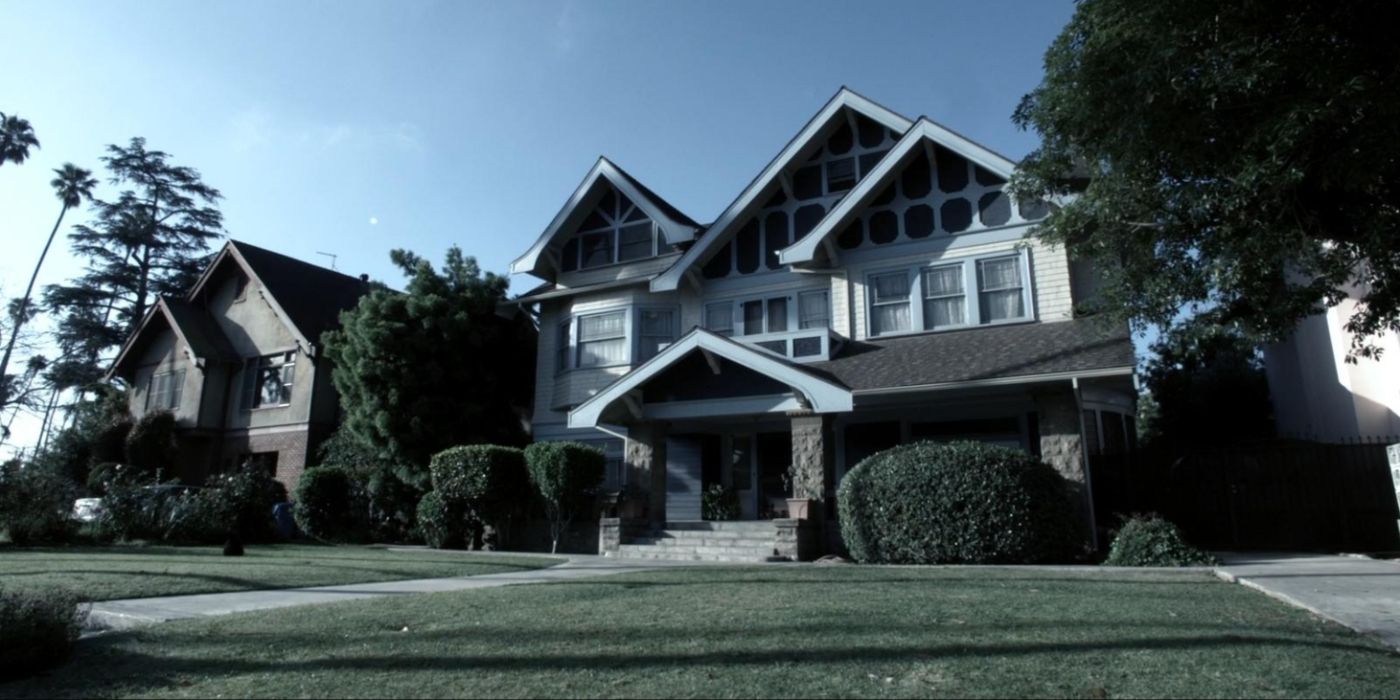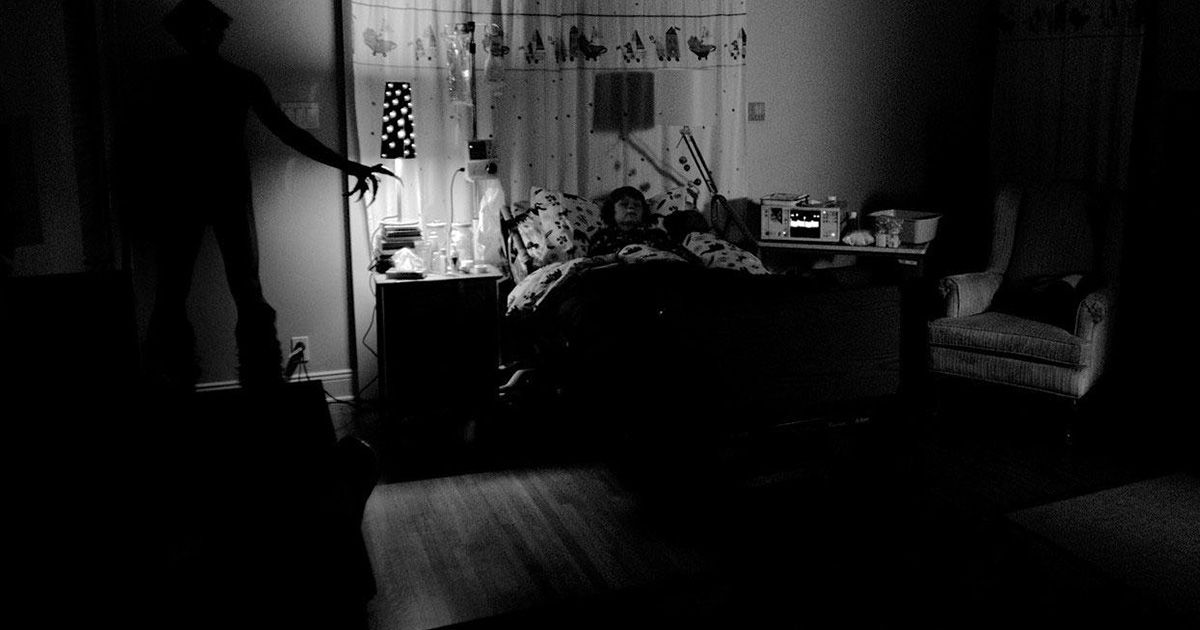Insidious, one of the most iconic horror franchises in recent years, has captivated audiences worldwide with its spine-chilling storyline and supernatural elements. But is Insidious true? This article dives deep into the origins of the film, exploring whether its terrifying narrative is rooted in reality or purely fictional. If you're a fan of the series or curious about its inspiration, you're in the right place.
Since its release in 2010, Insidious has been praised for its innovative approach to horror, blending elements of psychological terror with supernatural themes. Directed by James Wan, the film quickly became a cultural phenomenon, spawning multiple sequels and a spin-off series. But what many fans don't know is that the story behind Insidious is more grounded in reality than you might think.
In this comprehensive guide, we'll explore the real-life events that inspired the Insidious franchise, analyze its connection to paranormal phenomena, and provide insights into the filmmakers' creative process. Whether you're a die-hard fan or just curious about the truth behind the movie, this article will answer all your questions.
Read also:Who Is Jon Cryer
Table of Contents
- The Real-Life Inspiration Behind Insidious
- Biography: James Wan and Leigh Whannell
- Is Insidious Based on True Paranormal Events?
- The Coma Element: Fact or Fiction?
- Exploring the Supernatural Elements
- Paranormal Statistics and Studies
- How Sequels Enhanced the Storyline
- The Cultural Impact of Insidious
- Criticisms and Controversies
- Conclusion: Is Insidious True?
The Real-Life Inspiration Behind Insidious
While Insidious is often regarded as a work of fiction, the truth is that it draws heavily from real-life experiences and paranormal phenomena. James Wan and Leigh Whannell, the creators of the franchise, have openly discussed how their personal encounters with the supernatural influenced the story.
In an interview with Rolling Stone, James Wan revealed that the idea for Insidious stemmed from a recurring nightmare he had as a child. This nightmare involved being trapped in a dark, eerie world filled with malevolent spirits—a concept that eventually became the film's "The Further." Leigh Whannell, on the other hand, drew inspiration from his own experience with sleep paralysis, a condition that often manifests as vivid hallucinations.
By combining these personal experiences with extensive research into paranormal phenomena, the duo crafted a narrative that resonates with viewers on a deeply emotional level. This blend of personal inspiration and real-world elements is what makes Insidious so compelling.
Key Elements of the Story
- The concept of "The Further" is based on James Wan's childhood nightmares.
- Sleep paralysis, a condition experienced by Leigh Whannell, inspired the film's supernatural elements.
- Real-life paranormal investigations and ghost stories were referenced during the writing process.
Biography: James Wan and Leigh Whannell
Understanding the creators of Insidious is essential to appreciating the depth of the film's narrative. James Wan and Leigh Whannell, both renowned for their contributions to the horror genre, brought their unique perspectives and experiences to the project.
James Wan
James Wan is an Australian filmmaker best known for his work on horror franchises such as Saw, Insidious, and The Conjuring. Born on February 26, 1977, in Malaysia, Wan moved to Australia at a young age and developed a passion for filmmaking during his teenage years. His breakthrough came with the release of Saw in 2004, which established him as a leading figure in the horror industry.
Leigh Whannell
Leigh Whannell, also from Australia, is a writer, actor, and director who collaborated with James Wan on several successful projects. Born on April 28, 1977, Whannell's career began with his role in Saw, where he also co-wrote the screenplay. His ability to blend suspense with psychological depth has made him a key figure in modern horror cinema.
Read also:Journey To The Center Of
| Name | Birthdate | Nationality | Notable Works |
|---|---|---|---|
| James Wan | February 26, 1977 | Australian | Saw, Insidious, The Conjuring |
| Leigh Whannell | April 28, 1977 | Australian | Saw, Insidious, Upgrade |
Is Insidious Based on True Paranormal Events?
One of the most frequently asked questions about Insidious is whether it is based on true paranormal events. While the film itself is fictional, its creators have acknowledged drawing inspiration from real-life paranormal phenomena. This connection to reality adds an extra layer of fear for viewers, as it suggests that the supernatural events depicted in the movie could potentially happen in real life.
Paranormal investigator Ed Warren, whose work inspired The Conjuring, once stated that many of the incidents portrayed in Insidious bear striking similarities to cases he investigated during his career. For instance, the concept of a child being possessed by malevolent spirits has been documented in various paranormal studies.
Real-Life Paranormal Cases
- The Amityville Horror: A famous case of alleged demonic possession in a Long Island home.
- The Enfield Poltergeist: A well-documented incident involving a family haunted by poltergeist activity in England.
- Spiritual Mediums: Real-life accounts of individuals who claim to communicate with spirits, similar to the character Elise Rainier in Insidious.
The Coma Element: Fact or Fiction?
One of the central themes in Insidious is the protagonist's son falling into a mysterious coma. While this element may seem far-fetched, medical professionals have confirmed that comas can indeed occur without an obvious cause. Conditions such as encephalitis, brain injuries, and even certain medications can lead to prolonged unconsciousness.
In the case of Insidious, the filmmakers used the coma as a metaphor for the family's journey into the unknown. By exploring the psychological impact of a loved one's coma, the film delves into themes of grief, resilience, and the supernatural.
Medical Insights
- Comas can result from various medical conditions, including brain injuries and infections.
- Some cases of unexplained comas have been linked to supernatural or paranormal explanations in folklore.
- Modern medicine continues to study the mysteries of consciousness and the brain.
Exploring the Supernatural Elements
The supernatural elements in Insidious are what set it apart from other horror films. From ghostly apparitions to eerie landscapes, the film creates a world that feels both familiar and terrifying. But are these elements grounded in reality?
Research into paranormal phenomena suggests that many people claim to have experienced supernatural encounters. Whether it's hearing unexplained noises, seeing shadowy figures, or feeling an overwhelming sense of dread, these experiences are more common than one might think.
Common Supernatural Experiences
- Shadow People: Mysterious dark figures that appear in peripheral vision.
- Poltergeist Activity: Objects moving or disappearing without explanation.
- Ghostly Apparitions: Visual sightings of deceased individuals or spirits.
Paranormal Statistics and Studies
To better understand the connection between Insidious and real-life paranormal events, it's important to examine the statistics and studies surrounding these phenomena. According to a 2020 survey conducted by the Pew Research Center, approximately 29% of Americans believe in ghosts, while 15% claim to have seen or been in the presence of one.
In addition to surveys, scientific studies have attempted to explain the psychology behind paranormal beliefs. Researchers suggest that factors such as sleep paralysis, stress, and cultural influences can contribute to the perception of supernatural experiences.
Key Statistics
- 29% of Americans believe in ghosts.
- 15% claim to have seen or been in the presence of a ghost.
- Studies show a correlation between sleep paralysis and perceived paranormal activity.
How Sequels Enhanced the Storyline
The success of the original Insidious film led to the creation of three sequels, each expanding on the original storyline and introducing new characters and plotlines. These sequels delved deeper into the mythology of "The Further" and explored the origins of key characters such as Elise Rainier.
By building on the foundation laid by the first film, the sequels provided fans with a richer understanding of the Insidious universe. This expansion not only satisfied existing fans but also attracted new audiences to the franchise.
Notable Sequel Contributions
- Insidious: Chapter 2 revealed the connection between the Lambert family and "The Further."
- Insidious: Chapter 3 focused on Elise Rainier's backstory and her encounters with the supernatural.
- Insidious: The Last Key concluded the series with a chilling revelation about the origins of "The Further."
The Cultural Impact of Insidious
Since its release, Insidious has left a lasting impact on popular culture. The film's unique blend of psychological horror and supernatural elements has inspired countless filmmakers and redefined the horror genre. Its success at the box office also demonstrated the enduring appeal of horror films, paving the way for other low-budget, high-impact productions.
Moreover, Insidious has sparked conversations about the intersection of science and the supernatural, encouraging viewers to question the boundaries of reality. This cultural impact is a testament to the film's ability to resonate with audiences on a deeper level.
Criticisms and Controversies
Despite its widespread success, Insidious has faced its share of criticisms and controversies. Some critics argue that the film relies too heavily on jump scares, while others question the scientific validity of its supernatural themes. However, proponents of the film point out that its use of psychological horror and emotional depth sets it apart from other horror movies.
In response to these criticisms, James Wan and Leigh Whannell have emphasized the importance of creative freedom in storytelling. They argue that the film's supernatural elements serve as a metaphor for real-life fears and anxieties, making it a powerful tool for self-reflection.
Conclusion: Is Insidious True?
After exploring the origins, inspirations, and cultural impact of Insidious, it's clear that the film is a masterful blend of fiction and reality. While the story itself is fictional, its roots in real-life experiences and paranormal phenomena give it a sense of authenticity that resonates with viewers.
As you watch Insidious, remember that the fear it evokes is not just about the supernatural—it's about the universal human experience of facing the unknown. So, whether you're a fan of horror films or simply curious about the truth behind the movie, Insidious offers a thought-provoking journey into the depths of the human psyche.
We invite you to share your thoughts on this article and the Insidious franchise in the comments below. Do you believe in the supernatural elements depicted in the film? Or do you think it's purely fictional? Let us know, and don't forget to explore our other articles on horror films and paranormal phenomena!


